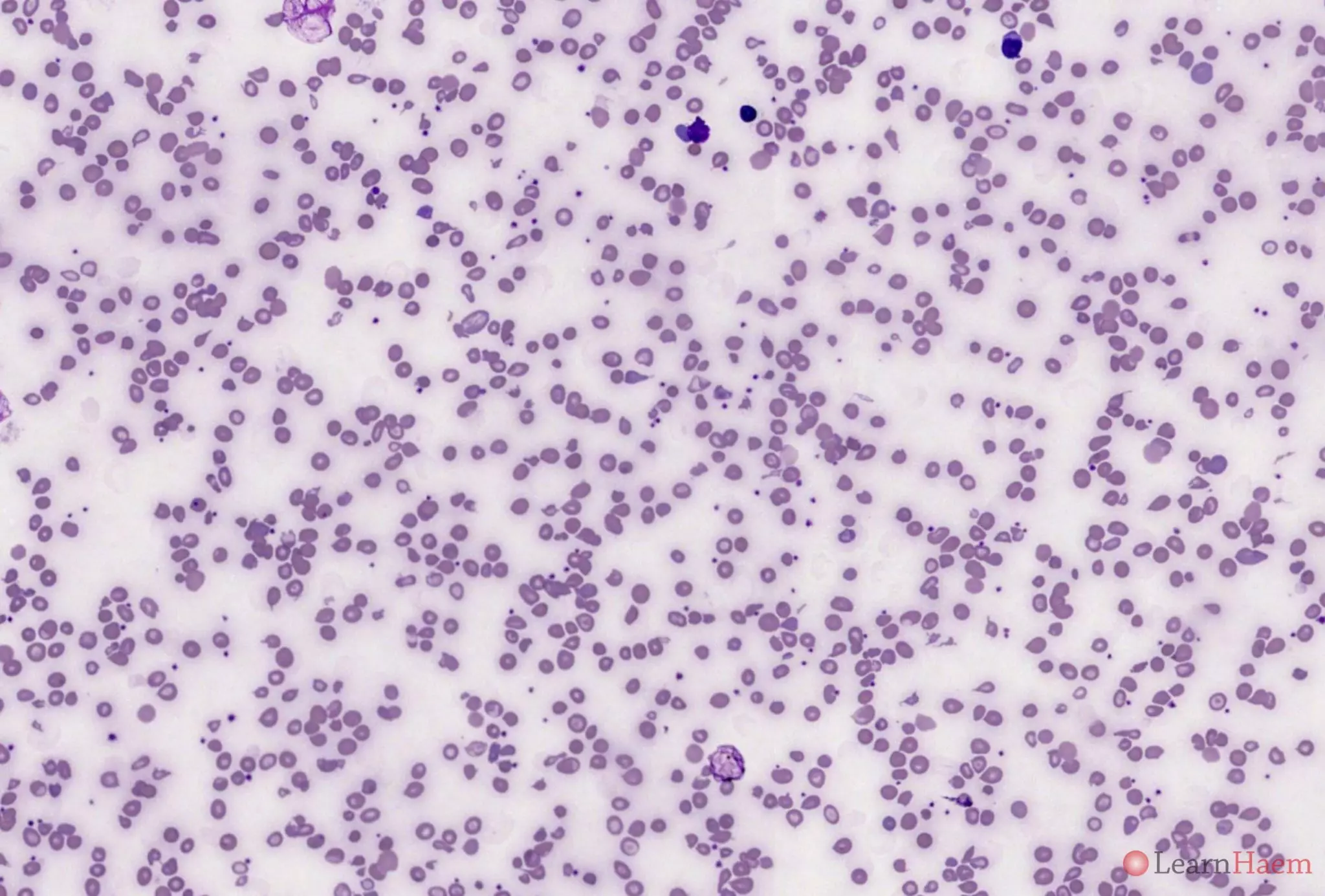ß thalassaemia results from deletions in the ß globin gene. A normal human has 2 ß globin genes. Deletions in ß genes result in imbalanced synthesis of α globins and ß globins. As a result, excess free α globin chains accumulate and precipitate in red cell precursors, interfering with maturation and resulting in intramedullary destruction of erythroid precursors. This is known as ineffective erythropoiesis. The RBCs that enter the circulating contain varying amounts of free α globin (the amount increases with the phenotypic severity of the ß thalassaemia). The α globin and its breakdown products are deleterious to the red cell membrane, causing it to become more rigid and resulting in shortened red cell survival.
A high RBC count with a microcytic anaemia is typical of the ineffective erythropoiesis and shortened red cell survival in ß thalassaemia.
ß thalassaemia mutations are common in the Mediterranean, India, Southeast Asia. They can occasionally be seen in Afro-Caribbeans.
Patients with ß thalassaemia major have a microcytic, hypochromic anaemia which is severe and requires transfusion support. The extra-medullary haematopoiesis which accompanies the disease results in characteristic facial features and hepatosplenomegaly.




Blood film features:
- Severe anaemia
- Marked anisopoikilocytosis
- Target cells
- Basophilic stippling
- Pappenheimer bodies
- Numerous nRBCs
Other features to look out for:
- Splenectomy changes
- Dimorphic picture (transfusion-dependent patient with post-transfusion sample)
Haemoglobin electrophoresis:
The haemoglobin electrophoresis varies depending on whether the patient is homozygous for ß0 thalassaemia or a compound heterozygote for ß0 and a severe ß+ thalassaemia. Homozygotes for ß0 thalassaemia will have only HbF and HbA2 on haemoglobin electrophoresis.

Alkaline gel electrophoresis from a patient with ß thalassaemia major. This patient is a compound heterozygote for ß0/ß+ thalassaemia. There are three bands with the mobility of haemoglobin A (red arrow), haemoglobin F (green arrow) and haemoglobin C (blue arrow).
HPLC:

HPLC from a patient with ß thalassaemia major. There is no normal haemoglobin A. Almost all the haemoglobin is haemoglobin F. The haemoglobin A2 fraction is increased.
Other resources:
- PHE Family Origin Questionnaire
- PHE Sickle Cell and Thalassaemia Screening Programme (2019)
- BCSH Guideline: Significant Haemoglobinopathies: Guidelines for Screening and Diagnosis (2010)
- BCSH Guideline: Red blood cell specifications for patients with hemoglobinopathies: a systematic review and guideline (2020)
- RCOG Guideline: Management of ß Thalassaemia in Pregnancy (2014)
- TIF Guideline: Management of Transfusion Dependent Thalassaemia (2014)


Leave A Comment